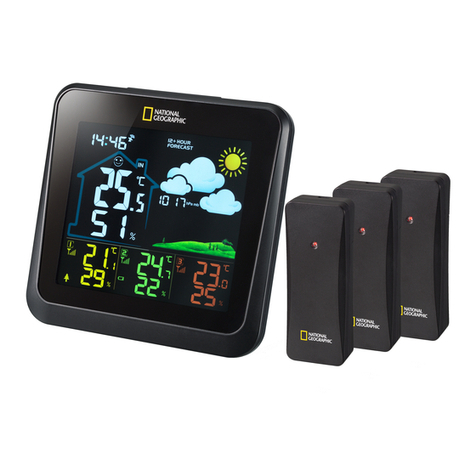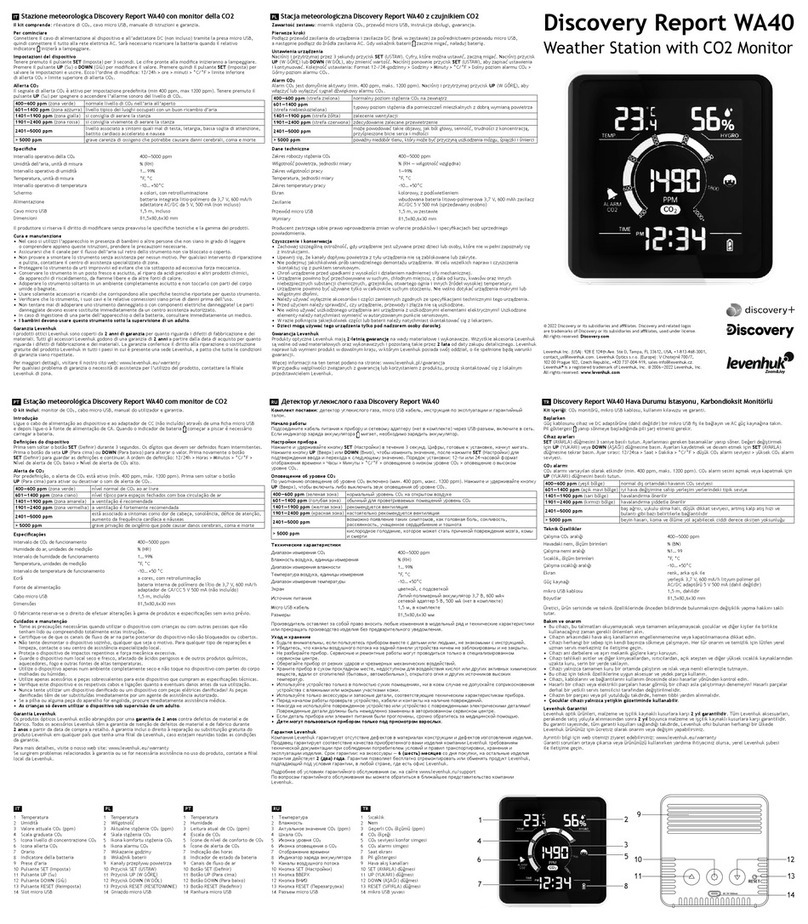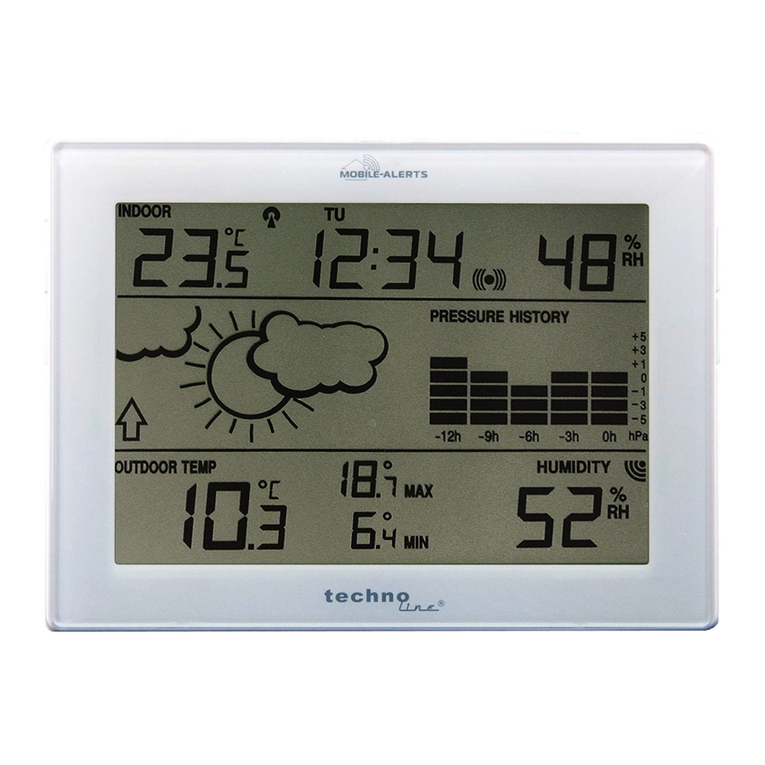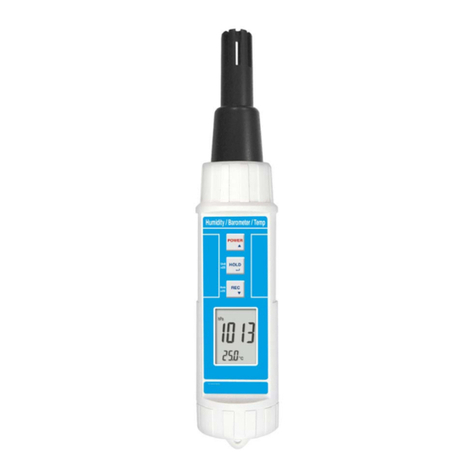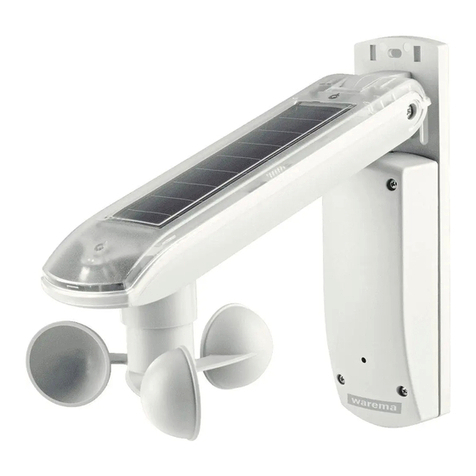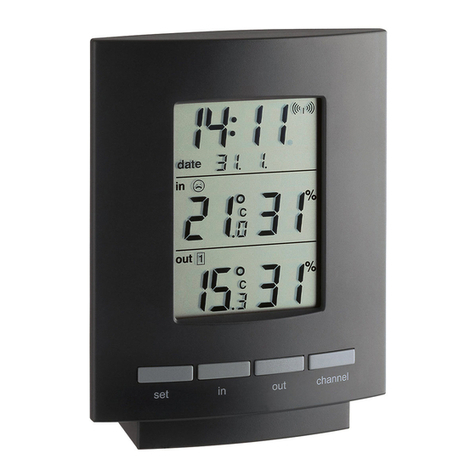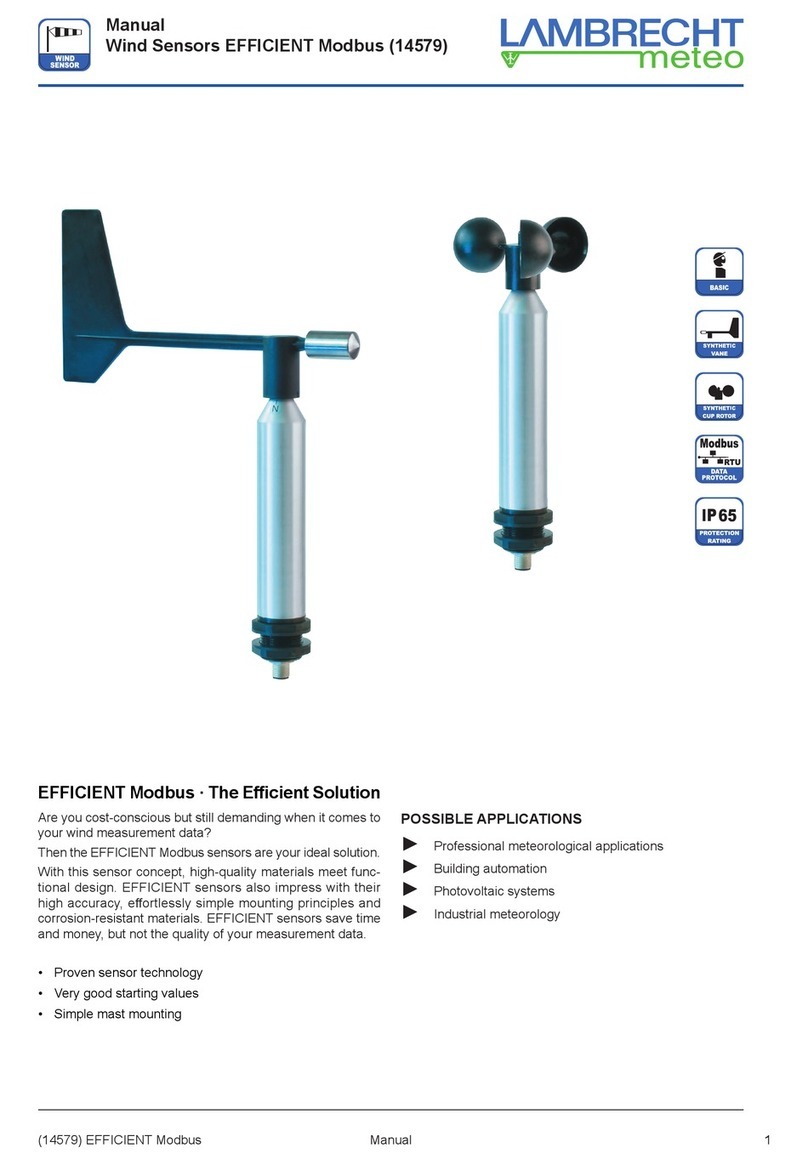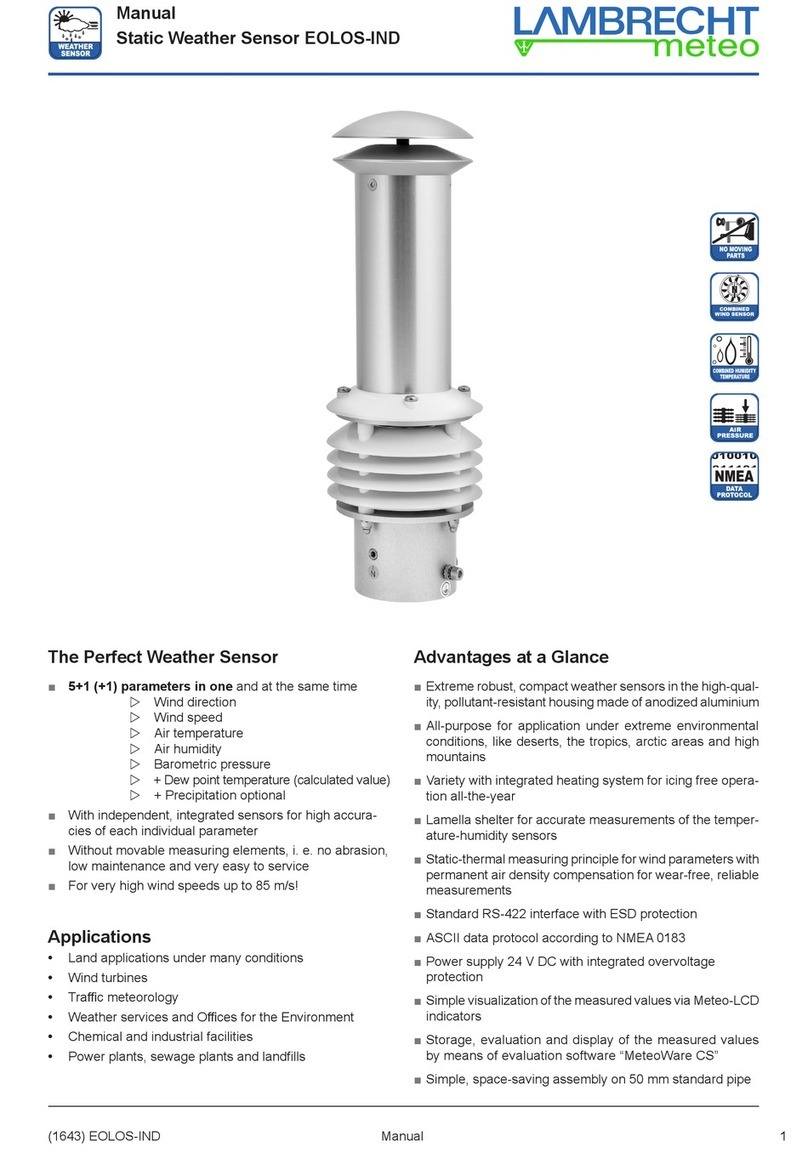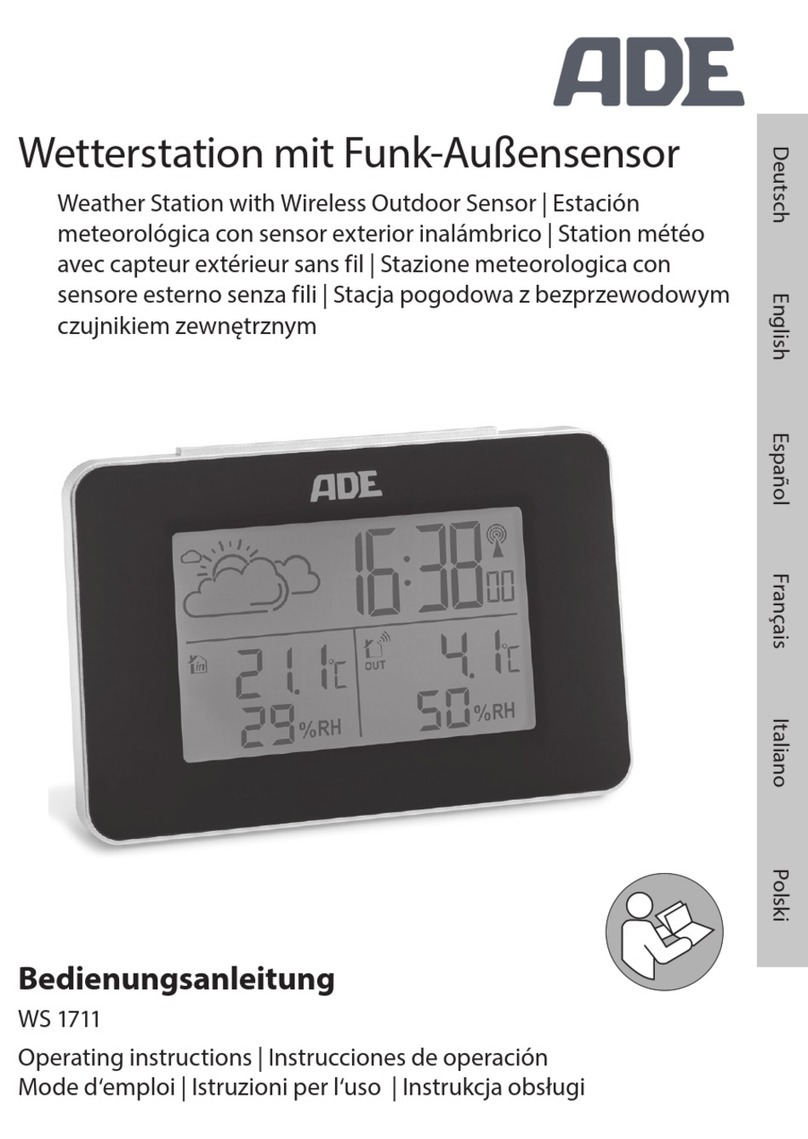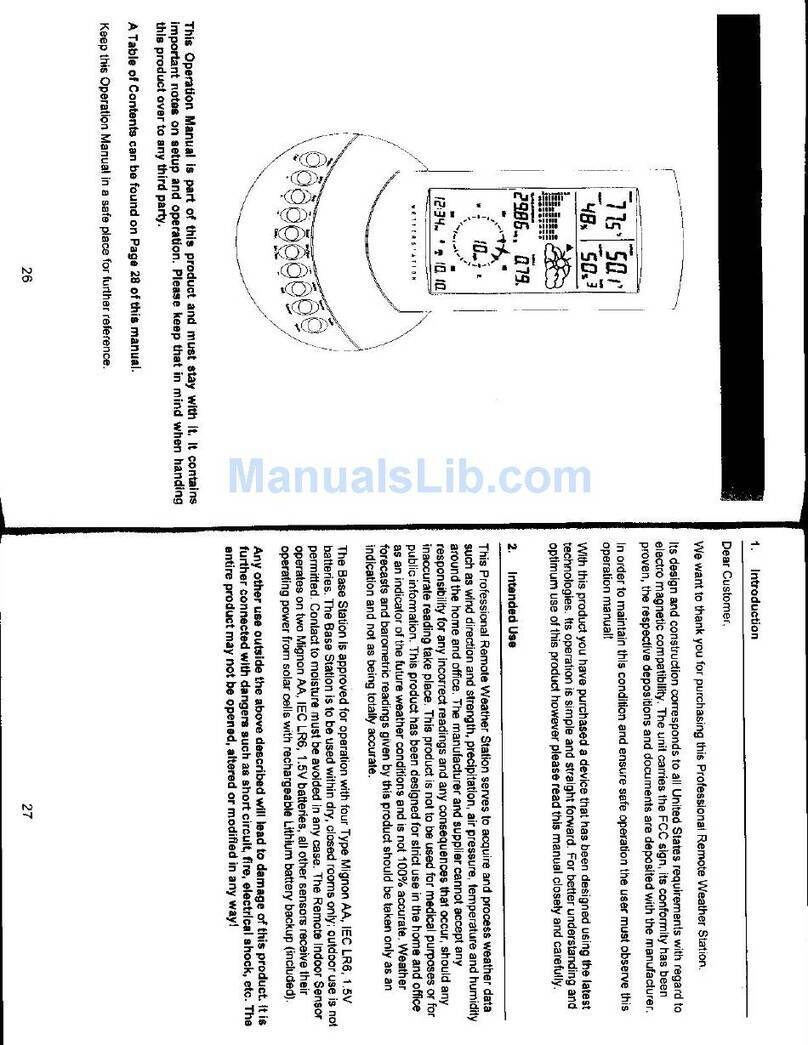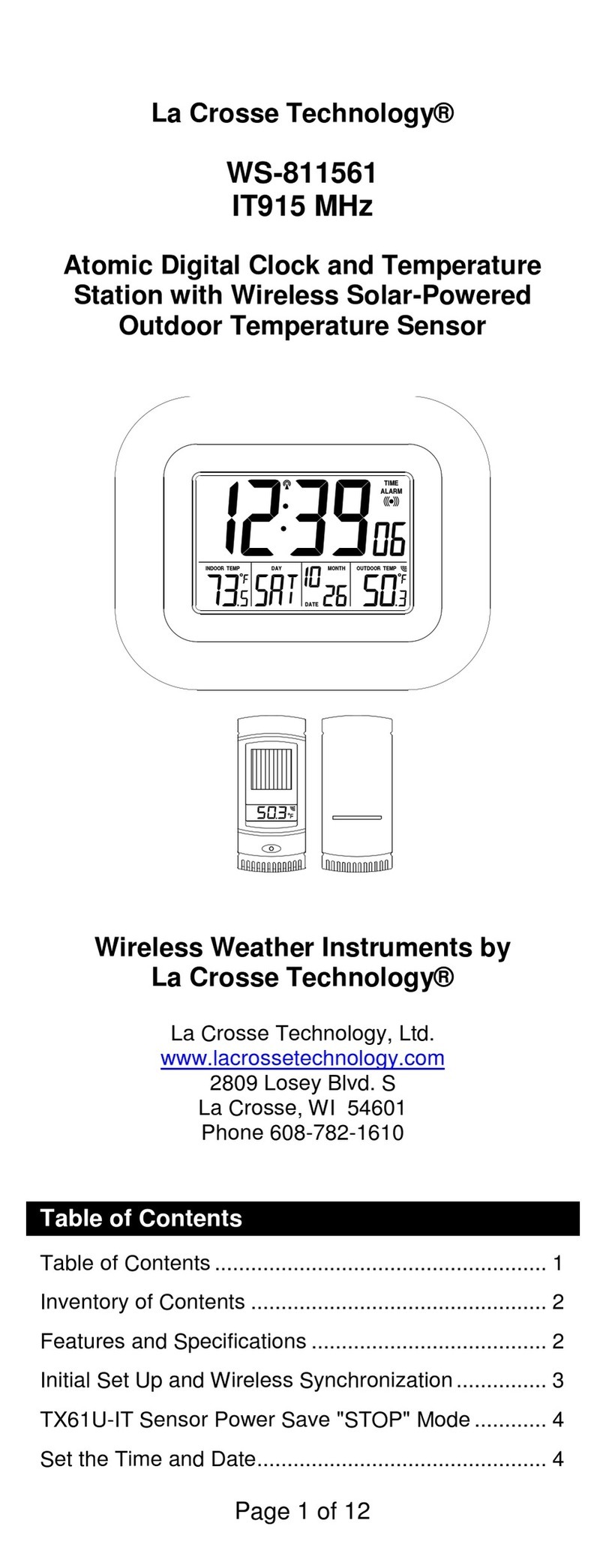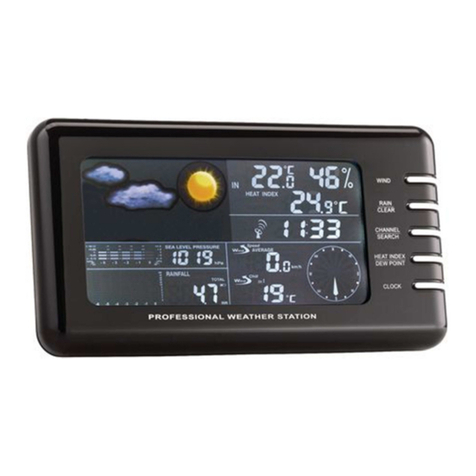
(14567/14577) INDUSTRY Modbus
Manual
Wind Sensors INDUSTRY Modbus
Manual(14567/14577) INDUSTRY Modbus Manual
Please note that the cable on the data processing side is pro-
tected against moisture, e.g. by using suitable cable glands.
If the mast is prepared accordingly, the connection cable can
also be laid completely in the pipe sections of a mast.
To reduce the risk of inductive interference the
sensor must be properly grounded (screening
on both sides).
5. Heating
The sensor disposes of an electronically controlled 18 W-
heating within the sensor head. The heating is supplied
together with the sensor electronics.
Under most climatological condi-
tions the heating prevents blocking
of the moving sensor parts (see
illustration). The cup rotor or the
wind vane are not heated. In case
of icing or formation of ice at the
moving sensor element the func-
tion is restricted for the period of
icing.
6. Maintenance
The design of the sensors allows a maintenance-free function
for a long time. We recommend a regular visual inspection of
the alignment of the wind direction sensor as well as a sensor
calibration of both sensor types at intervals of 2 years.
When installing the connecting cables, make sure
not to excessively shorten the cable leading to the
connector in the lower part of the sensor casing, so
that you can later maintain or dismounting the sensor.
Put further a cable loop as sensor protection against
water under the sensor.
Tip: Install the sensors on ground to the traverse and
align you the wind vane parallel to the traverse. You
go only then upward, in order to accordingly align the
sensors with traverse under assistance of a partner
on ground.
3. Setting up the North Direction
for the wind direction sensor
For wind direction measurements the north mark on the sen-
sor must be aligned with the geographical north direction.
You have to turn the marking exactly over the marking at the
sensor shaft. When you have aligned the marks, you may x
the wind vane with e.g. a piece of adhesive tape. When you
have xed the wind vane this way you can locate the refer-
ence point by aiming at it over the axis. Now you must turn the
sensor casing on the mounting tube until the tip of the wind
vane points to the reference point in the north.
To set up the sensor’s north orientation select a landmark
which is as far as possible up north with regard to the nal
position of the wind direction sensor.
The reference point can be selected using a topographical
map (1:25000). The exact position of the reference point is
determined using an amplitude compass that can be adjusted
horizontally on a stand.
Please make sure there is no magnetic deviation
of the compass.
When the north direction is set up for the wind direction sen-
sor, you can mounting it like under point "Principle of installa-
tion". Remove any adhesive tape.
If you cannot select a northern reference point owing to local
conditions, you can proceed analogously using a reference
point in the south. In this case, however, you have to make
sure the north mark on the sensor does not point to the refer-
ence point but in the opposite direction.
4. Electrical connection
Sensors INDUSTRY are connected to a data measuring sys-
tem via the open cable end. The sensors have a cable-plug
connection to the cable.
The connecting cable is suitably led along the mast between
the data evaluation device (indicating instrument or data ac-
quisition system) and the sensor. The cable must be fastened
using appropriate cable ties (their length depends on the mast
diameter).
Lead the cable in a wide curve from the mast to the
bottom of the casing so that you can later easily
dismount the cable.
H
Heating
Heizung
4
